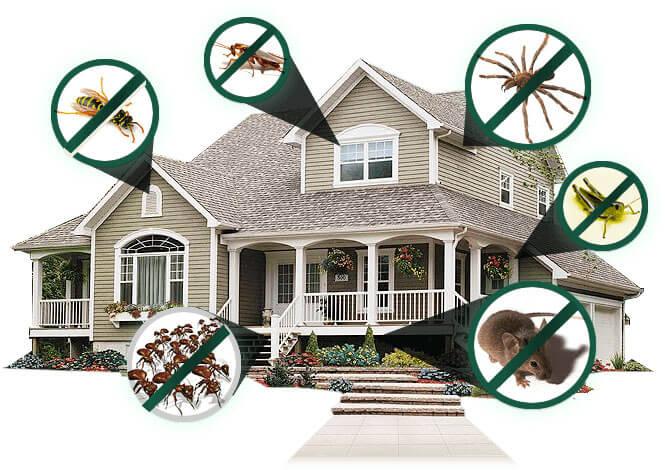Bed Insect Therapy Break Down: Contrasting Chemical Vs. Non-Chemical Solutions
In the realm of parasite control, especially when managing the persistent concern of bed bugs, the choice between chemical and non-chemical therapy remedies can be a critical one. Both methods use distinctive benefits and drawbacks, affecting variables such as performance, safety considerations, and total cost. By analyzing the nuanced details of each technique, a more clear understanding of which path to pursue in attending to a bed insect invasion can be acquired.
Performance of Chemical Therapies
Chemical treatments for bed bug problems have actually been widely identified for their potent and rapid effectiveness in removing these pests. When taking into consideration the efficiency of chemical therapies, it is essential to understand that they can supply a comprehensive and fast remedy to a bed bug problem. Professional pest control operators commonly depend on insecticides to target bed bugs at numerous phases of their life cycle, consisting of grownups, eggs, and nymphs. These chemicals normally work by disrupting the bed bugs' nervous system, bring about paralysis and eventual fatality.
In addition, chemical treatments have the benefit of supplying residual effects, meaning that they can continue to eliminate bed bugs also after the preliminary application. This recurring activity is particularly beneficial in combating any kind of prospective re-infestations. Additionally, the fast activity of chemical treatments can bring alleviation to people dealing with serious bed pest problems, enabling them to reclaim control of their space promptly.
Security Interest In Chemical Solutions
One important element that requires careful factor to consider when utilizing chemical solutions for bed pest therapy is making sure the safety of owners and the atmosphere. Direct exposure to specific chemicals utilized in bed insect therapies can lead to respiratory system concerns, skin inflammation, or various other damaging reactions, particularly in individuals with pre-existing problems or sensitivities.
Moreover, the environmental impact of chemical solutions is an additional significant consideration. Some chemicals used in bed pest treatments may be hazardous to valuable insects, wildlife, and communities if they leach right into the dirt or water systems. It is necessary to utilize chemical treatments deliberately, following safety and security guidelines, and thinking about less harmful options to reduce these risks and make sure the safe and reliable administration of bed bug invasions.
Benefits of Non-Chemical Strategies
Thinking about the prospective security worries and ecological impact connected with chemical solutions for bed insect treatment, exploring non-chemical techniques presents an appealing option with numerous distinctive advantages. Non-chemical treatments are ecologically pleasant, as they do not contribute to air or water pollution, making them a sustainable option for bug control.
Furthermore, non-chemical services can be effective in targeting bed pests, consisting of hard-to-reach areas where chemical therapies might not permeate. Techniques such as warmth treatment, vacuuming, heavy steam cleaning, and cushion encasements provide extensive elimination without making use of hazardous chemicals. Furthermore, non-chemical approaches can be less disruptive, needing minimal prep work and permitting quicker reentry right into treated locations. On the whole, opting for non-chemical bed pest therapy methods not only focuses on safety and security and ecological protection however additionally visit their website makes sure effective and extensive bug control.
Limitations of Non-Chemical Treatments

In addition, non-chemical treatments often require multiple applications to achieve effective removal. This can be lengthy and may not always ensure total elimination of all bed pests and their eggs, particularly in hard-to-reach or hidden areas.
Additionally, the success of non-chemical treatments greatly counts on appropriate application and thoroughness, which can be challenging for people without expert proficiency. Insufficient application of non-chemical methods might cause insufficient obliteration, bring about consistent invasions and the demand for additional treatments.
For that reason, while non-chemical therapies have their advantages, it is necessary to recognize these constraints and consider resource them when establishing one of the most effective strategy for managing bed bug problems.
Expense Contrast: Chemical Vs. Non-Chemical Options
Given the restrictions connected with non-chemical therapies, an important facet to evaluate in the context of bed insect monitoring is the expense comparison in between chemical and non-chemical options. In contrast, non-chemical therapies like warm therapy or vapor can be extra costly, with prices varying from $1,000 to $6,000 for a whole home. While the preliminary cost of chemical treatments might seem lower, multiple treatments might be required to fully eliminate the infestation, possibly raising the general expense.
Conclusion

Thinking about the possible security concerns and environmental influence linked with chemical services for bed bug treatment, exploring non-chemical strategies offers an appealing alternative with several distinctive benefits.Offered the limitations associated with non-chemical therapies, an essential aspect to assess in the context of bed insect administration is the expense comparison between chemical and non-chemical options. In comparison, non-chemical therapies like warm treatment or steam can be more costly, with expenses varying from $1,000 to $6,000 for a whole home. While the initial cost of chemical therapies may seem lower, numerous treatments might be needed to completely get rid of the infestation, possibly increasing the total expense.In final thought, when contrasting chemical and non-chemical bed pest treatment alternatives, it is crucial to consider effectiveness, security, benefits, restrictions, and expense.
Comments on “Dependable A1 Bed Bug Exterminator Charlotte - Eliminate Bed Bugs Quick”